(The following analysis of the principal Rosh Hashanah services is based in large part on an exposition by R’ Yeruchem Olshin in Yerach L’mo’adim, Yamim Nora’im I, ma’amar47, § 1-4.)
In certain respects, Rosh Hashanah may seem like a confusing time. Such might be the impression one gets from a cursory glance at the day’s practices.
Combination Package
Of course, as we know, Rosh Hashanah is a solemn and serious time, as the world stands in judgment before Hashem over the most significant issues of life and death. As R’ Yisrael Salanter writes (Ohr Yisrael § 7): “A person – and all who rely on him – are in a sakanah gedolah (grave danger) during this time of judgment.” As Hakadosh Baruch Hu examines one’s deeds and determines his fate, a primary method for addressing this sakanah is through the endeavor of teshuvah (repentance) to rectify one’s “record.” The mitzvah of blowing the shofar fits well with this notion, as the Rambam famously remarks that the message and purpose of the shofar is to arouse us to repent (Hilchos Teshuvah 3:4).
One would have imagined, then, that the bulk of the day would be dedicated to involvement in teshuvah. Certainly it is a major component of the day, and the more thoroughly one applies himself to this task, the better. Yet, when we look at the overall picture, it seems that most of our time and energy on this day is spent immersed in prayer. Not only that, but the theme of teshuvah doesn’t even seem to figure so prominently in the service. Of course it is mentioned, as is the notion that Hashem sits in judgment. But insofar as the liturgy is concerned, these seem to receive relatively sporadic attention. It almost seems as if the theme of “Kingship” is as central (if not more so) to the day as teshuvah or shofar.
The dual nature of the day’s service is further reflected in the order of the Mussaf service, as delineated in the Mishnah (Rosh Hashanah 4:5):
אוֹמֵר אָבוֹת וּגְבוּרוֹת וּקְדֻשַּׁת הַשֵּׁם, וְכוֹלֵל מַלְכֻיּוֹת עִם קְדֻשַּׁת הַיּוֹם, וְתוֹקֵעַ. זִכְרוֹנוֹת, וְתוֹקֵעַ. שׁוֹפָרוֹת, וְתוֹקֵעַ. וְאוֹמֵר עֲבוֹדָה וְהוֹדָאָה וּבִרְכַּת כֹּהֲנִים.
“One recites Avos, Gevuros, and Kedushas Hashem (the first three blessings of any Shemoneh Esreih) and includes (the blessing of) Malchiyos (“Kingship”) with Kedushas Hashem, and the shofar is blown. (He then recites the blessing of) Zichronos (“Remembrances”), and the shofar is blown, (followed by the recital of the blessing of) Shofaros, and the shofar is blown. He (then) recites Avodah, Hoda’ah, and the Priestly Blessing (including Sim Shalom, i.e., he recites the final three blessings of any Shemoneh Esreih).”
Here we see some type of interplay between these seemingly disparate entities. What, indeed, is the relationship between shofar blowing and the recital of Malchiyos, Zichronos, and Shofros?
The Netziv clarifies this issue, as well as the others raised above. He does so by informing us that a lot more transpires on Rosh Hashanah than we might realize.
The Nations Conspire
In a landmark piece in Harcheiv Davar (Vayikra 23:24), the Netziv explains that there are actually two judgments that take place on this day. One involves the individual judgment every person undergoes, in which his affairs for the coming year are determined. But then there is a second matter of contention that is addressed on this day, affecting the Jewish nation as a whole. This occurs in the Upper realms, wherein the Celestial representatives of all the nations below coalesce as a group of litigants. They appear before Hashem and attempt to annul the special relationship between Him and Yisrael. R’ Shlomoh Kluger (Chachmas Shlomo 581:64) states similarly, explaining that they take aim at the Jews’ status as the “Chosen People,” urging the Almighty to renege on His choice. This, then, is the essence of this second judgment: will Yisrael remain Hashem’s “Chosen People”?
As stated previously, one of the most basic methods of addressing the first judgment – affecting the lives of individuals – is through heartfelt teshuvah. How is this second peril addressed? The Netziv derives the answer from a most illuminating passage in the Yerushalmi. When the leader of the services approaches the lectern, how should he be encouraged? Should we tell him, “Do a great job?” “Daven well?” These may seem to be sensible options, but the Yerushalmi (Berachos ch. 5) states differently. Apparently, the officiator of the prayers is told to prepare for war.
The Netziv understands this as a reference to the Celestial battle waged by the angelic representatives of the nations against Yisrael. For it is prayer that is the most effective weapon in this conflict, specifically the verbal coronation of Hashem through the recital of Malchiyos, Zichronos, and Shofros. This is why we find “Kingship” playing such a prominent role in the order of the day. At this desperate time, this is the optimal way to ensure that Hashem will not be swayed by these Celestial accusers. In effect, we are pleading with Him to retain us as His people, as we proclaim that He is our King.
This notion also sheds much light on the role of the shofar in the day’s service. True, the shofar assists in the effort for teshuvah, aiding a Jew to be granted a favorable judgment in his personal accounting. But this applies only to the blowing of the shofar that takes place before Mussaf, when it stands on its own. The shofar-blowing that is integrated into the Mussaf service, explains the Netziv, serves a different function. He likens it to the use of the chatzotzros (trumpets) that would be sounded at a time of battle (Bamidbar 10:9). Here, the purpose was to aid the battle effort, primarily by arousing the people to pray for success. Similarly, the shofar is sounded during Mussaf – which itself is a time of battle. Thus, as we recite the Malchiyos, Zichoronos, and Shofros, we do battle with the Celestial representatives who seek our dissolution.
The above grants us much insight into the day’s service. In addition to the essential acts of shofar blowing and teshuvah, we engage extensively in tefillah. This is our principal weapon in our battle against these pernicious forces: proclaiming His Kingship and pleading that we remain His people. This will occur, as we recite: כִּי תַעֲבִיר מֶמְשֶׁלֶת זָדוֹן מִן הָאָרֶץ – “When You shall remove the dominion of evil from the earth.”
This prayer, which we also recite on Yom Kippur, contains another layer of meaning particularly pertinent to the times in which we live. We will explore this next week, b’ezras Hashem.









